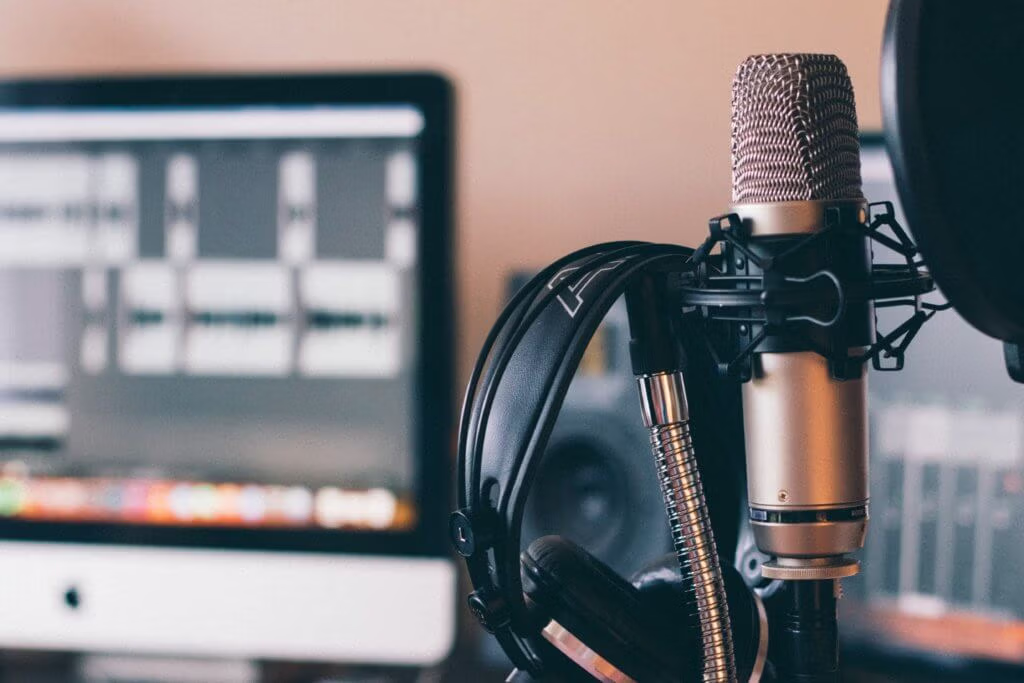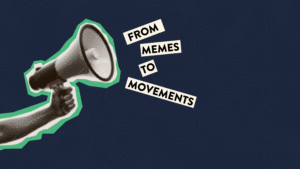Do you want to start a professional-sounding podcast but don’t have the money to invest in high-end recording equipment? Don’t worry, you can still create a professional-sounding podcast on a budget of $1000 or even less! This blog post will discuss some tips for setting up a low-cost podcast studio. By following these tips, you can create a podcast that sounds great and doesn’t break the bank!
Pick a Microphone for Your Podcast
First, let’s talk about microphones. You’ll need to spend a little money on a microphone to get great sound quality. There are many affordable options that will work just fine for podcasting. Just make sure to avoid using the built-in microphone on your computer! Investing in a good microphone will make a big difference in the quality of your podcast.
Mitchell Bruce, Associate for Media Production with the Alabama Baptist State Board of Missions chose the Shure SM27 large-diaphragm condenser microphone when setting up their podcast studio. You can find these microphones in many places for around $300 and you can hear them in use for their new “Messages” podcast.
Nick Wells, the former audio/video specialist for Dogwood and now director of media production for First Baptist Montgomery recommended the Rode Podcaster Broadcast Microphone Studio Kit when building a podcast studio for Vaughn Forest Church, Montgomery. The studio kit included the shock mount, integrated microphone cable, and boom and went for around $350 each. You can see and hear these in use each week with their “The Other Six” podcast.
Mark Denman, video production specialist for Dogwood chose the Rode PodMic Dynamic Podcasting microphone for Dogwood’s new podcast setup that you can hear every other Tuesday during our Dogwood Media Solutions podcast. He added that there are “countless microphones that are viable options such as the classic Shure SM58, which is only $100 and does not sound much worse than a more professional option.”
Don’t forget to add a scissor-style broadcast boom arm that can attach to the lip of most tables using a built-in clamp if one isn’t included with the microphone you are purchasing. You’ll be looking at around $100 a piece for these.
Additional accessories to consider will be the microphone cable, and possibly a pop filter which can help dial back the plosive sounds our lips make. These are commonly made with words that have “p” sounds like “perfect” or “possible”. A 6-foot cable and an attachable nylon pop filter will each run you around $20-$30.
Recording Your Professional-Sounding Podcast Audio
Next, you’ll need software or a dedicated piece of equipment to record and edit your podcast. The software route may appear less expensive, especially with options like Audacity and Garageband available. Still, you will need to invest in an audio interface to convert the microphone to input into your computer. The least expensive USB audio interface I located as I am writing this will run you $160 and only has two inputs.
Mitchell Bruce chose the Zoom PodTrack P8. It’s a portable multitrack podcast recorder that looks similar to a traditional audio board. It has 6 audio inputs and features 6 independent headphone outputs too. It has a load of other features too including the ability for people to call into the podcast. The entire podcast can have all 13 tracks recorded separately to an SD card which can then be remixed in post-production for a professional-sounding podcast.
Mitchell mentioned that had he started the podcast after the Rode RODECaster Pro II came out. He might have also given it a look had been available earlier. Very similar in functionality to the Zoom system he purchased but for our budget-minded reader with a $699 price tag.
Nick installed a Focusrite Scarlett 18i20 USB Type C Audio interface at Vaughn Forest. From there it was connected to a computer where each channel could be recorded using the software. This piece of equipment comes in at $550.
At Dogwood, we have a Zoom F3 2-input, a 2-track audio recorder that we use for on-field recording for our video projects. We’ll be using it on a normal basis for our podcast recording also. You can purchase this audio recorder for around $350. It can also double as a USB audio interface too!
Picking the Right Place to Record Your Podcast
Finally, in theory, you’ll need a quiet place to record your podcast. This can be a challenge if you don’t have your own studio or office. If possible, try to find a room in your house that you can use for recording. If that’s not possible, there are some other options. You could try recording in a closet or even in your car! Just make sure to eliminate as much background noise as possible.
For our podcast at Dogwood, we are using one of the smallest rooms in our new office. We added a kit to help reduce echoes in the room that ran right at $350. We also painted all the walls black just for fun along with adding a $99 curtain to cover the door.
Our hope is that with these simple tips, you can easily set up a low-cost podcast studio that will produce professional-sounding results. So what are you waiting for? Start podcasting today!


